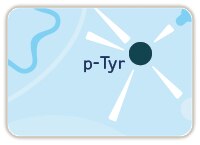
您确实想关闭吗?
除非您已经将产品添加到购物车或收藏夹中,否则关闭操作不会保存您的定制内容。
单击“确认”以关闭MILLIPLEX® MAP工具,或单击“取消”以返回您的选择。
选择可定制的板面及预混试剂盒 - 或者 - 细胞信号试剂盒MAPmates™
设计您的MILLIPLEX® MAP试剂盒并定价。
可定制的板面及预混试剂盒
我们范围广泛的产品组合包括多元板面,允许您在板面中选择最符合您需求的分析物。在一个单独的选项卡上,您可以选择预混的细胞活素型或单试剂盒。
细胞信号试剂盒和MAPmates™
选择允许您探索整个路径或流程的固定试剂盒。或者通过选择单试剂MAPmates™,按照所提供的指南来设计您自己的试剂盒。
下列MAPmates™不应复合(plex)在一起:
-需要另一种 化验缓冲液的 MAPmates™。
-磷特异性和总MAPmate™对,例如总GSK3β和GSK3β(Ser 9)。
-PanTyr和现场特异性MAPmates™,例如磷-EGF受体和磷-STAT1(Tyr701)。
-单个靶多个磷-MAPmate™(Akt, STAT3)。
-GAPDH和β-微管蛋白不能与含有panTyr的试剂盒或MAPmates™复合(plex)在一起。
| 产品目录编号 | 订购说明 | 数量 / 包装 | 清单 |
该产品已添加到收藏夹。

| 选择品种 | . |
| 选择板面类型 | . |
| 选择试剂盒 | . |
| 选择样品类型 | 对于某些板面,样品类型将决定可以将哪些分析物复合(plex)在一起。 |

从我们的多元板面中选择可用的分析物,或者从预混或单试剂盒中选择。
设计您自己的试剂盒,或者从我们预先混合的板面或单工板面中选择。

Custom Premix
Selecting "Custom Premix" option means that all of the beads you have chosen will be premixed in manufacturing before the kit is sent to you.
Selecting "Custom Premix" option means that all of the beads you have chosen will be premixed in manufacturing before the kit is sent to you.
| Catalogue Number | Ordering Description | Qty/Pack | List |
该产品已添加到收藏夹。
此产品已添加到您的购物车。
现在您可以定制另一个试剂盒了,您可选择预混试剂盒,结帐或关闭订购工具。






